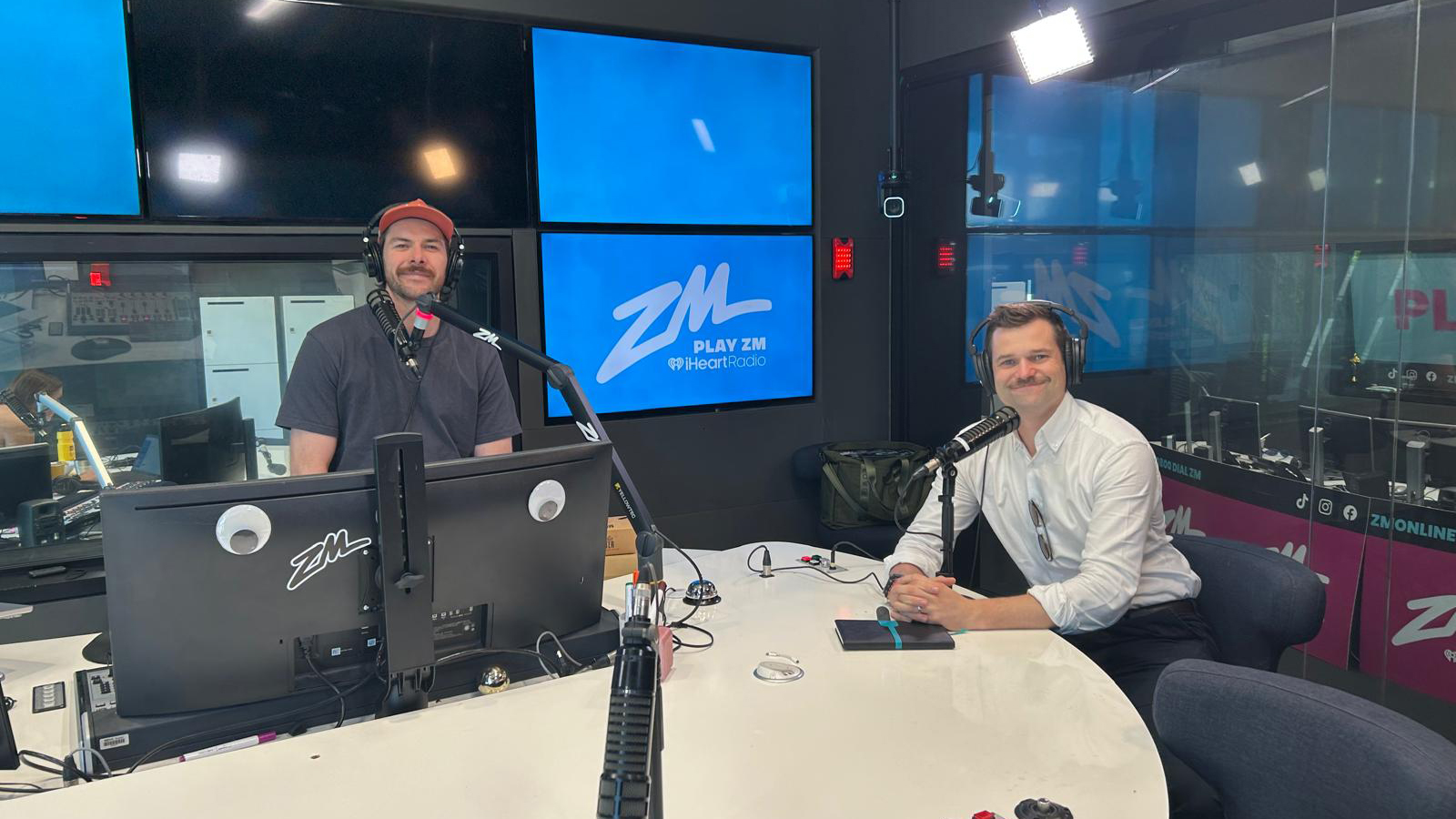From trade disruption to huge escalations in geopolitics, the past six months have played out under a cloud of sustained global tension. Is it likely to continue or will the global landscape settle? Talking to Ryan Bridge, Milford Analyst Brendan Larsen unpacks key developments that shaped markets in the first half of 2025, and outlines what to expect in second half of the year.
Listen.
Click here to download the MP3 file or listen to the podcast on your favourite platform:
Read.
Bridge talks Business: 8 July 2025
Episode Transcript
Ryan Bridge
Kia ora and welcome to Episode 40 of Bridge talks Business with Milford. Around the world we go today with Liam Lawson-look-a-like Brendan Larsen. He’s an Analyst at Milford. He’ll be with us to talk about all the key markets that we’re investing in. To the US, where everything’s upside down and changing rapidly. Though despite predictions to the contrary, the economy hasn’t tanked and the Dow is in fact back up over its losses to all-time highs. We do Europe. The Germans. They are spending and splashing the cash. The UK, where they’re cutting their cloth and may even need to raise taxes. But first, here’s your top five business bits.
1. The US labour market remains solid with June payrolls ahead of expectations. Unemployment rate now falling from 4.2 to 4.1%.
2. The UK labour government reducing welfare cuts after failing to get enough support for that initial bill. With fiscal constraints, there’s an increasing expectation that tax hikes may be required.
3. European inflation rose slightly from 1.9 to 2% in June, while core inflation remained stable at 2.3%.
4. China announcing plans to provide a 3,600 yuan, or 500 US dollar annual subsidy for new children under the age of three. As they try to boost declining birth rates.
5. Tariffs are back to the forefront of investor minds, with the US sending tariff letters out this week extending the deadline to the 1 August.
So for today’s sit down feature interview, we’re going to take a little tiki-tour, a little trip around the globe and find out what’s happening with the economies inside some of the key markets in which we’re invested. We’re going to be joined by Brendan Larsen, who is an Analyst at Milford. We’ve had him on the podcast before. And just to note that this segment is information only and should not be considered financial advice. Great to have you with us. Brendan, welcome back.
Brendan Larsen
Thanks for having me.
Ryan Bridge
Good to see you. Now, I know for those who are listening to this, you won’t understand. But has anyone ever told you you look like Liam Lawson?
Brendan Larsen
I’ve heard it a few times.
Ryan Bridge
Do you perform better at your job than he does at the moment?
Brendan Larsen
Absolutely.
Ryan Bridge
Hey, let’s start with the American economy and the outlook. We’ve been through a pretty tumultuous first half. What are you thinking about it? How are you seeing it?
Brendan Larsen
Yeah. That’s right. There’s been a lot happening in the first half, as you say. We’ve been kept on our toes trying to digest all the information we’ve had. I’d say until April, the feeling really was in the US that we were heading towards a recession. The tariffs that Trump had applied were far bigger than anyone anticipated. And that was going to have severe consequences on economic growth. We’ve got to remember that these are effectively taxes on US consumers. And so that was really quite concerning. We saw a really immediate reaction in the US following this. High frequency indicators for growth, consumer sentiment all started to roll over. And so that was really quite concerning. And enough for Trump really to pause these tariffs, while they negotiated with a bunch of different countries.
Ryan Bridge
Basically since then things pretty much got tipped upside down on their head.
Brendan Larsen
Yeah. That’s right. So the second phase of the first half really was this flip and rhetoric from the Trump administration. So during these tariff pauses, the government began to more openly discuss the positives of their policies. So things like deregulation and most importantly, the Big, Beautiful Bill that they implemented as well. So these really helped to stabilise consumer and business sentiment. And markets really liked that as well.
Ryan Bridge
The Big, Beautiful Bill that everyone talks about that no one really understands other than it’s massive. What are some of the key positives from the bill?
Brendan Larsen
Yeah. So the extension of the 2017 tax cuts are really probably the most positive. But there’s also a lot of business-friendly policies like expensing of R&D for domestic manufacturing; depreciation that really encourages investment for businesses in the US. Like you alluded to, it is really big and it is quite stimulative. And I think that really characterises this flip in government stance quite well. You might recall that Trump alluded in his build up to the election that he wanted to reduce the fiscal deficit, but in fact, this increases the fiscal deficit. So you can see they really prioritised growth over fiscal discipline.
Ryan Bridge
So, lots of good stuff in there. And maybe it’s a game of what you’re talking about or what’s being focused on. But there are still quite a few risks for the American economy. I mean, we’ve just seen today we’ve seen new tariffs announced.
Brendan Larsen
Yeah. That’s right. So yes, I think the stance of policy has gone from a headwind to a bit of a tailwind. And data has stabilised a little bit. But as you say there’s plenty of risks out there still. And so yeah, today letters being sent out to some of the more second-tier trading partners, Japan and South Korea, for example, and a few other Asian countries. So, these are still a concern for growth. And I think the bigger one we’re looking for is the European outcome that is still in progress. And so Trump’s actually extended the deadline again until August. And so we’re waiting to see what the effective tariff rate is going to be. Which really means how much of an impact on growth and inflation is going to come from all this. So we’re still waiting to find that out.
Ryan Bridge
Yeah. You mentioned the UK, Europe and obviously that part of the world, they’ve got a completely different script that they’re reading from now on borrowing and spending.
Brendan Larsen
Yeah. That’s right. And so I think the shift in Germany in particular is what you’re alluding to. I mean, that was really quite historic in that Germany has not wanted to spend or, you know via debt try and grow the economy. And that really flipped on its head in March. And more recently, actually last week, we had an announcement from the German government that they were going to actually expedite some of this stuff and spend money faster to try and grow the economy. And so that has really been a big focus for investors globally with this more medium-term positive shift in Europe, with some more concerning things happening on the fiscal front in the US.
Ryan Bridge
They’re just wanted to get money out the door in Germany basically, aren’t they? They’re looking for shovel-ready stuff that’s ready to go, that they can get money into now.
Brendan Larsen
That’s right. They’ve really kitchen-sinked it. And so basically anything that’s infrastructure that they want to put money into that, to really roll this out fast, as you say.
Ryan Bridge
All right. So that’s the German situation. What about markets generally. How are they reacting to what’s happening in America and the EU?
Brendan Larsen
Yeah. So I guess if you cast your mind back to April, around Liberation Day, we had the S&P falling about 20%. So that’s a big, big fall. But subsequently since then we’ve seen a 25% rally back above that. And we’re actually at all-time highs again in US share markets. So really a very strong market recovery. And so on one hand, this is to do with this shift in policy stance we just alluded to. There’s actually a number of different things driving this as well. And so AI has been a theme that we’ve talked about on this podcast a few times. And that’s still driving demand for many of these large cap technology companies in the US. So that’s a big positive. And there’s also this growing expectation that the Federal Reserve may be able to ease rates even further this year with the progress we’ve seen on inflation, despite the still lingering risks that tariffs push inflation up a bit higher. There is a growing consensus that that may be supportive of markets as well. European and UK share markets are actually still performing better than the US share market year-to-date, and that really owes to the performance they had over the April and May period, given their quite defensive markets. But also this positive fiscal story in Europe really supported demand for European companies over that time as well.
Ryan Bridge
Yeah, absolutely. So let’s take a look ahead. What is the outlook for these major centres, these major blocks?
Brendan Larsen
I’d say it is still highly uncertain. There is a lot of water to flow under the bridge, particularly with tariffs. So on the US side, I’d say that the consumer is still in a reasonably strong position. Balance sheets are pretty good. And they still have high amounts of savings. And so that’s positive. But the concern is around the labour market in the US and how that evolves from here. The demand is slowing, but you’re also seeing a slowing of supply of labour with all the immigration policies that the Trump government has had. And so that’s a mild offset. But we’re sort of waiting to see how that evolves from here. But we think growth somewhere around a trend in the US this year. The European and UK story is a bit different.
The tariff impact will be negative for growth in Europe near term. But these positives around fiscal policy are a positive medium term driver. In the UK it’s a little bit messy still, with the current state of the government there. Last week was a prime example of that, with issues around their welfare bill that they tried to bring in to balance their books. And so, yeah, the next 3 to 6 months is messy, but thereafter we think there’s scope for rate cuts.
Ryan Bridge
The Chancellor crying in the house.
Brendan Larsen
Not a great look for market participants who are owning the debt of those governments. And so that’s still a bit of a concern for the market.
Ryan Bridge
Absolutely, hey great to get a good wrap of the world from you. Thanks so much Brendan.
Brendan Larsen
Thanks so much for having me.
Ryan Bridge
And that was Brendan Larsen, an Analyst at Milford, talking about some of the hotspots around the world, where we’re seeing that economic activity flourish, where we’re seeing a few warning signs and places that our own money is being invested around the world.
If you want to rewatch this episode or have a listen again, or share it with one of your friends. You can do that. You can like, follow subscribe anywhere that you get your podcast. Until next time, keep investing.
Missed previous episode? Don’t worry! Click here to catch up now.


